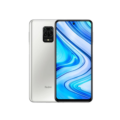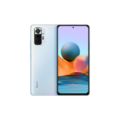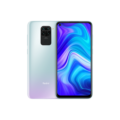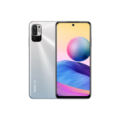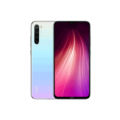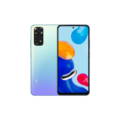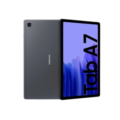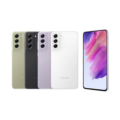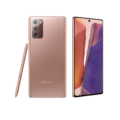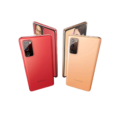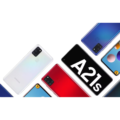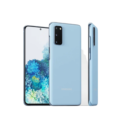Redmi 9C Harga Malaysia
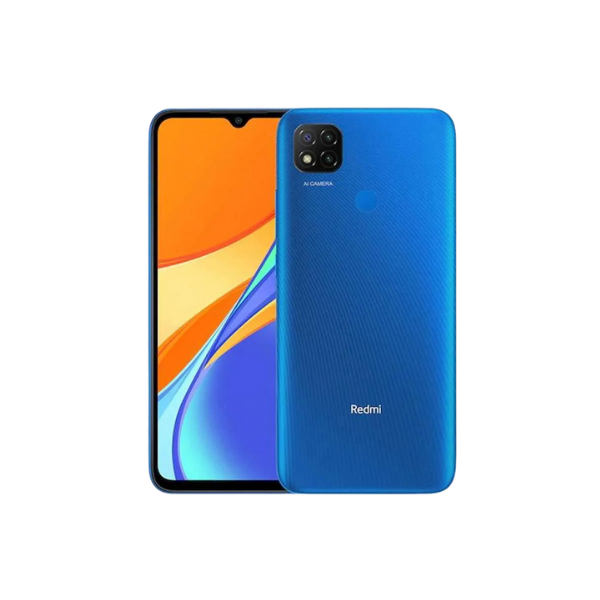

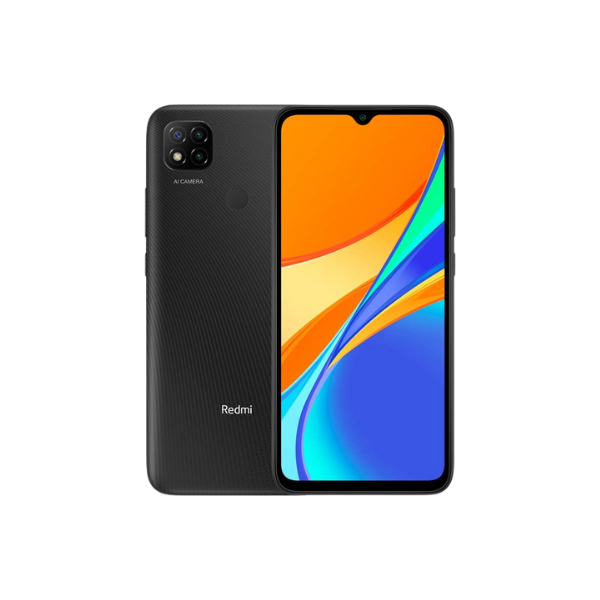

- CPU: MediaTek MT6765G Helio G35 (12 nm)
- RAM: 2 GB, 3 GB, 4 GB
- Storage: 32 GB, 64 GB, 128 GB
- Display: IPS LCD
- Camera: 13 MP Triple Camera
- OS: Android 10, MIUI 12
- AnTuTu Total Score: 110.490 (v8)
Redmi 9C Harga Malaysia Spesifikasi Malaysia
General
| Device Type | Smart Phone |
| Model | M2006C3MG, M2006C3MT |
| Announced | 30 June, 2020 |
| Released | 12 August, 2020 |
| Status | Available |
| Price | RM338 |
Design
| Type <strong>Design Type</strong> called form factor refers to a mobile phone's size, shape, and style as well as the layout and position of major components of phone. There are three major form factors seen in mobile phones => bar phones, folding phones and sliding phones. | Bar |
| Dimensions | 164.9 x 77 x 9 mm (6.49 x 3.03 x 0.35 in) |
| Weight | 196 g (6.91 oz) |
| Colors | Midnight Gray, Sunrise Orange, Twilight Blue |
Network
| 4G Network | 1, 2, 3, 4, 5, 7, 8, 20, 28, 38, 40, 41 |
| SIM <strong>SIM</strong> (Subscriber Identity Module) is a small card that contains mobile network subscriber's account information. This allows the phone using the card to attach to a mobile network. The SIM card is most commonly associated with GSM and UMTS mobile networks. Moving a SIM card from one phone to another allows a subscriber to switch mobile phones without having to contact their mobile network carrier. SIM cards can also be used by a phone to store limited amounts of data, such as phone numbers and text messages. | Nano SIM |
| Dual SIM | dual stand-by |
Display
| Display Type <strong>Display Technology => </strong> A number of display technologies and types used in mobile phones => TFT (Thin Film Transistor), IPS (In-Place Switching), OLED (Organic Light Emitting Diode), AMOLED (Active-Matrix Organic Light-Emitting Diode), Super AMOLED (an even advanced version of AMOLED), Resistive Touchscreen (Resistive touchscreens contain two layer of conductive material with a very small gap between them which acts as a resistance), Capacitive Touchsceen (Capacitive touchscreen technology consists of a layer of glass coated with a transparent conductor) | IPS LCD |
| Size | 6.53 inches, 102.9 cm2 (~81.1% screen-to-body ratio) |
| Resolution | 720 x 1600 pixels, 20:9 ratio |
| Display Colors <strong>Display Colors</strong> is refers to the number of different shades of colors that the screen is capable of displaying => 64K colors, 256K colors and 16 million colors, Obviously 16M is highest available range of colors and better than others. | 16 Millions Colors |
| Pixel Density <strong>Pixel Density (PPI)</strong> is refers to the concentration of pixels on a particular display, measured in pixels per inch (ppi). Pixel density is calculated by dividing the diagonal pixel resolution of a display by its diagonal size, higher pixel density better display quality. | (~269 ppi density) |
| Touch Screen | Yes, Multitouch |
| Features | 400 nits (typ) |
Camera
| Rear Camera <strong>Camera</strong> is able to capture photographs and usually videos, The most important characteristics of a camera are the resolution (measured in megapixels), lens focus type (fixed or automatic), higher megapixel cameras are known to capture higher quality photos, but not always a good measurement of the photos quality. |
Triple Camera 13 MP, f/2.2, 28mm (wide), 1.0µm, PDAF 2 MP, f/2.4, (macro) 2 MP, f/2.4, (depth) |
| Front Camera | 5 MP, f/2.2, (wide), 1.12µm, 1080p@30fps |
| Image | 1080p |
| Video | 1080p@30fps |
| Camera Features | LED flash, HDR |
Software
| Operating System <strong>OS => </strong> Every computer system run on a base software called Operating System (OS). Operating System controls all basic operations of the computer (such as smartphone, PDAs, tablet computers and other handheld devices). The Operating System allows the user to install and run third party applications (apps), apps are used to add new functionality to the device. | Android 10 |
| User Interface <strong>UI</strong> or user interface of a device is the look and feel of the on-screen menu system. How it works, its color scheme, how it responds to button presses, all of these things are part of the user interface. | MIUI 12 |
Hardware
| Chipset <strong>Chipset</strong> is a group of integrated circuits designed to perform one or a more dedicated functions, often with real time computing constraints, Popular smartphones are equipped with more advanced embedded chipsets that can do many different tasks depending on their programming. | MediaTek MT6765G Helio G35 (12 nm) |
| CPU <strong>CPU</strong> (Central Processing Unit) mostly known as processors, CPU processes instructions in order to carry out certain functions that make your device operate properly. Processors are often described as the brain of computers, smartphones and tablets, Smartphones and tablets rely on processors to carry out their every task, Processors are an incredibly important factor in selecting any type of computing device, including your smartphone. | Octa-core (4x2.3 GHz Cortex-A53 & 4x1.8 GHz Cortex-A53) |
| GPU <strong>GPU</strong> (Graphics Processing Unit) is a single-chip processor designed to rapidly manipulate and alter memory to accelerate the creation of images in a frame buffer intended for output to a display, This includes things such as lighting effects, object transformations, and 3D motion. | PowerVR GE8320 |
| RAM (Memory) <strong>RAM</strong> (Random Access Memory) is a type of computer memory that can be accessed randomly, any byte of memory can be accessed without touching the preceding bytes that allows information to be stored and accessed quickly from random locations. RAM is the most common type of memory found in computer systems, smartphones, tablets and other electronic devices. | 2 GB, 3 GB, 4 GB |
| Internal Storage <strong>Internal Storage</strong> is a data storage space (flash memory) mostly used in smartphones, tablets and other electronic devices where operating system, apps, music, photos, videos, files and other user data Is stored. | 32 GB, 64 GB. 128 GB |
| Card Slot <strong>Memory Card Slot</strong> is a special slot for inserting a memory card. Memory cards allow you to expand the phone's built-in memory, A memory card (sometimes called a flash memory card or a storage card) is a small storage medium used to store data such as text, pictures, audio, and video, for use on small, portable or remote computing devices such as mobile phones, mp3 players, digital cameras. | microSDXC (dedicated slot) |
| Sensors <strong>Sensors</strong> are electronic components that detects and responds to some type of input from the physical environment. The specific input could be light, heat, motion, moisture, pressure and location, The output is generally a signal that is converted to use in computing systems, a location sensor, such as a GPS receiver is able to detect current location of your electronic device. | Fingerprint (rear-mounted), accelerometer, proximity |
Battery
| Battery Type <strong>Battery Type => </strong> Cell phones run on various kinds of batteries depending on the manufacturer, phone size or shape and features. There are basically four types of cell phone batteries => Lithium Polymer, Lithium Ion, Nickel Metal Hydride and Nickel Cadmium. | Li-Poly (Lithium Polymer) |
| Placement | non-removable |
| Capacity <strong>Battery Capacity</strong> is a measure (typically in Amp-hr) of the charge stored by the battery, and is determined by the mass of active material contained in the battery. The battery capacity represents the maximum amount of energy that can be extracted from the battery under certain conditions. | 5000 mAh |
| Charging | 10W wired |
Connectivity
| Bluetooth <strong>Bluetooth</strong> is a wireless communications technology for exchanging data between mobile phones, headsets, computers and other network devices over short distances without wires, Bluetooth technology was primarily designed to support simple wireless networking of personal consumer devices. | 5.0, A2DP, LE |
| Wi-fi <strong>Wi-Fi</strong> is a popular wireless networking technology using radio waves to provide high-speed network connections that allows devices to communicate without cords or cables, Wi-Fi is increasingly becoming the preferred mode of internet connectivity all over the world. | Wi-Fi 802.11 b/g/n, Wi-Fi Direct |
| Wi-fi Hotspot | |
| USB | microUSB 2.0, USB On-The-Go |
| GPS <strong>GPS</strong> The Global Positioning System is a satellite-based radio navigation system, GPS permits users to determine their position, velocity and the time 24 hours a day, in all weather, anywhere in the world, In order to locate your position, your device or GPS receiver must have a clear view of the sky. | GPS, GLONASS, BDS |
| NFC <strong>NFC</strong> (Near field communication) is a set of standards for smartphones and similar devices to establish peer-to-peer radio communications with each other by touching them together or bringing them into proximity, usually no more than a few inches. | |
| Wireless Charging <strong>Wireless Charging</strong> (Inductive Charging) uses an electromagnetic field to transfer energy between two objects. This is usually done with a charging station. Energy is sent through an inductive coupling to an electrical device, which can then use that energy to charge batteries or run the device. | No |
Media
| Loudspeaker | Yes |
| Handsfree | 3.5mm jack |
Redmi 9C pertama kali diumumkan akan dikeluarkan pada 30 Jun 2020, dan kemudiannya secara rasmi diedarkan secara meluas pada 12 Ogos 2020. Anda boleh memperoleh peranti ini dengan harga 150 Dolar atau kira-kira RM 672, terdapat 2 versi atau jenis yang tersedia untuk anda.
Versi asal atau biasa dan versi NFC tersedia dalam 3 warna yang berbeza, termasuk Sunrise Orange, Midnight Grey, dan Twilight Blue, dan tiada warna ungu untuk Redmi 9C.
Anda boleh membelinya secara rasmi di kedai-kedai rasmi Xiaomi di kawasan anda, tetapi anda perlu bersedia untuk membayar harga yang lebih tinggi daripada penjual lain. Anda perlu mengeluarkan lebih banyak wang, sekurang-kurangnya 20 Dolar untuk mendapatkan versi NFC.
Perbezaan ini bukanlah kecil walaupun anda hanya mendapatkan NFC. Terdapat beberapa pilihan berdasarkan kapasiti RAM dan memori dalaman atau spesifikasi Redmi 9C, termasuk:
- Kapasiti RAM 2GB dan Memori Dalaman 32GB
- Kapasiti RAM 3GB dan Memori Dalaman 32GB
- Kapasiti RAM 3GB dan Memori Dalaman 64GB
- Kapasiti RAM 4GB dan Memori Dalaman 64GB
Reka Bentuk
Xiaomi Redmi 9C mempunyai reka bentuk yang boleh dibilang lebih tebal dari biasa, iaitu 9mm. Bahan yang digunakan adalah plastik yang beratnya kira-kira 200 gram yang membuat anda berasa sedikit padat ketika memegangnya, dan bahan ini kelihatan mahal apabila dipegang.
Anda boleh menjumpai pemindai cap jari yang diletakkan di bahagian peranti, bagi mereka yang jari-jarinya agak kecil mungkin agak menyusahkan, walaupun hanya beberapa orang yang mengalami masalah sedemikian.
Paparan
Skrin yang digunakan dalam peranti ini adalah jenis IPS LCD dengan saiz 6.53 inci atau kira-kira 81.1% nisbah skrin-ke-bingkai, dan ini menjadikan warna-warna kelihatan lebih terang.
Resolusi mempunyai saiz 720 x 1600 piksel, iaitu nisbah 20:9 dengan ketumpatan 269 PPI, anda mungkin sedikit risau tentang spesifikasinya apabila pertama kali menggunakannya.
Anda mungkin boleh melihat piksel-pikselnya, tetapi jangan risau, mereka tidak dapat dilihat dengan mata kasar. Panel IPS yang dipasang di skrin membolehkan anda melihat sudut pandangan yang lebih baik dan skrin sentuh agak responsif.
Kamera
Mari kita bincangkan tentang komponen yang menjadi kegemaran ramai orang apabila melakukan ulasan Redmi 9C, iaitu kamera.
Anda pasti sudah tahu bahawa Xiaomi dikenali mempunyai kamera yang agak baik, walaupun masih jauh dari perbandingan dengan iPhone, dan anda boleh memperolehnya dengan harga hanya 100 dolar, sebenarnya hasil gambar juga tidak boleh dianggap remeh.
Anda dapat melihat butiran foto dengan cukup baik walaupun dengan pembesaran, dan jika anda tidak terlalu memberi perhatian padanya maka tidak akan ada masalah besar.
Prestasi
Dari segi prestasi, anda boleh dikatakan tidak dapat berharap banyak, tetapi kualitinya sepadan dengan harganya. Jika anda tidak membandingkan diri anda dengan peranti yang lebih mahal, maka prestasinya sudah memadai.
Sistem operasi juga secara umumnya sama seperti kebanyakan telefon Android. Anda boleh menikmati perkhidmatan Google tanpa sebarang masalah. Adalah wajar bahawa akan terdapat beberapa perlahan apabila anda membuka beberapa aplikasi aktif, terutama jika lebih banyak aplikasi yang dibuka.
Sebuah peranti dengan versi RAM yang lebih tinggi seperti 3GB dan memori dalaman berkapasiti 128GB tentu lebih baik untuk dipilih. Anda sudah pasti tahu bahawa jika anda memilih kapasiti RAM 2GB, sangat mungkin ia tidak mencukupi untuk anda.
Jika anda dengan sengaja ingin membeli telefon pintar untuk bermain permainan dengan Redmi 9C warna biru, maka ini bukan pilihan terbaik. Jika anda bermain jenis permainan yang lebih ringan, maka ini tidak akan menjadi masalah, tetapi masih, bagi beberapa orang yang mempunyai citarasa permainan yang tinggi, ini tidak memuaskan bagi mereka.
Bateri
Seperti peranti Xiaomi yang lain, kapasiti bateri dan daya dalam peranti ini adalah yang terbaik yang anda mungkin dapatkan.
Kapasiti bateri yang dimilikinya adalah jenis Li-Po yang tidak boleh dikeluarkan dengan kapasiti 5000 mAh yang secara amnya akan tahan selama 2 hari tanpa sebarang masalah.
Skrin dengan resolusi 720p tentu akan memerlukan kuasa yang lebih sedikit berbanding resolusi yang lebih tinggi, jadi ini juga faktor penting kerana resolusi yang besar akan mengguna banyak kuasa dan cepat habis.
Port mikro USB hanya mempunyai kapasiti adapter 10W, yang merupakan kelemahan. Ini membuat pengecasan pantas tidak tersedia dan anda perlu bersabar menunggu 3 jam untuk cajan 0 hingga 100 peratus.
Harga
Harga Redmi 9C kini dijual bermula dari RM338 hingga RM672. Harga ini diguna pakai untuk semua warna Redmi 9C.
Anda boleh melawat laman web rasmi di Mi Malaysia
Soalan Lazim
Bagaimana dengan Hayat Bateri Xiaomi Redmi 9C?
Hayat bateri sangat baik, hanya sahaja pengecasan adalah lambat.
Bagaimana dengan prestasi Xiaomi Redmi 9C?
Jangan gunakannya untuk bermain permainan dengan resolusi tinggi kerana anda hanya akan berasa terganggu.

